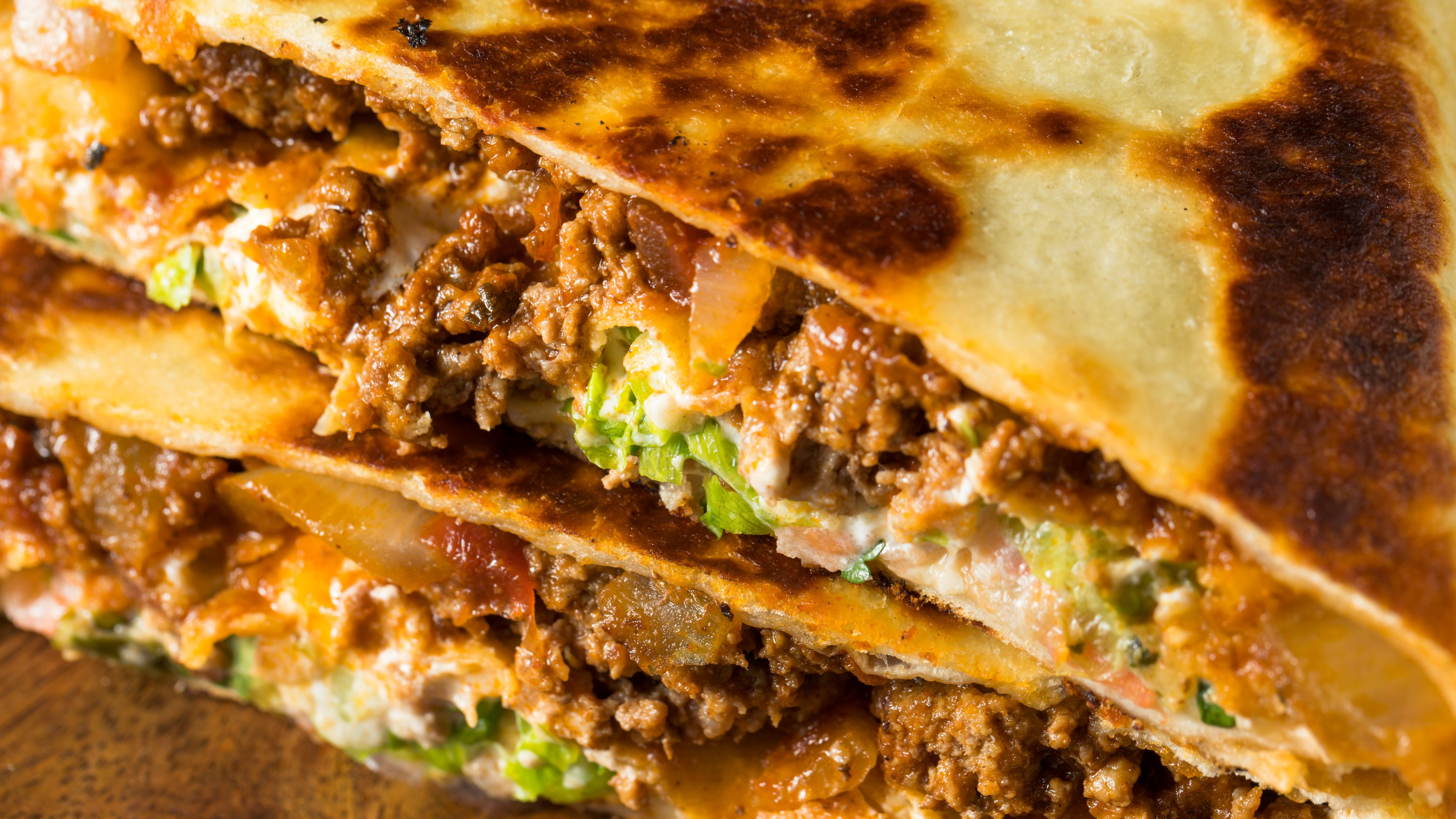The Enduring Legacy Of Taco Bell's Crunchwrap Supreme
The Crunchwrap format never stops inspiring professional chefs.
There's no question that Taco Bell's Crunchwrap Supreme has changed our conception of fast food for the better. Its brilliant structure, tucked in all along the edges, can accommodate heaps of various fillings, and its shape means it's easy to pick up and eat on the go. When it first debuted in 2005, the Crunchwrap was deemed an immediate hit and was added to Taco Bell's permanent menu in January 2006. In the 16 years since, it has inspired a generation of chefs, all of whom continue to make this concoction their own with fresh interpretations of a modern classic.
Eater Portland has documented the ways in which Taco Bell's Crunchwrap Supreme has become a vehicle for creative cooking across the city. In the earlier days of the pandemic, Portland chef Gabriel Rucker created a duck and marionberry hoisin sauce crunchwrap. Mexican-Southern mashup Nacheaux (great name, by the way) currently has its own crunchwrap stuffed with a plethora of goodies: fried chicken, red beans and rice, slaw, salsa, cheese, and pickled onions.
Chicago chefs have also dabbled in crunchwrap cooking. In 2020, ex-fine dining chef Ryan Pfeiffer partnered with Mason Hereford, owner of New Orleans sandwich shop Turkey and The Wolf, to create a veggie version for the Big Kids menu. Crunchwraps also make occasional appearances at vegan pop-up Herbivore, made of all plant-based ingredients. And earlier this year, B.J. Novak (of The Office) partnered up with chef Tim Hollingsworth to offer a Wagyu beef Crunchwrap at Chain, a restaurant concept dedicated to nostalgic fast food copycats.
And don't even get me started on TikTok. Search for the term "Crunchwrap" and you'll be rewarded with thousands of results.
@firstnamewild Crunch Wrap! #tacos #crunchwrap #recipe #cooking #foodtok #fypage
From a culinary perspective, the Crunchwrap Supreme is an act of genius. We all know Taco Bell is a master at reshaping and repackaging the same stable of basic ingredients, churning out some pretty entertaining novelties in the process—but the Crunchwrap's architecture really is second to none.
The soft flour tortilla gives it some chew, and unlike many items on the Taco Bell menu, it's griddled, which not only seals it shut but lends a satisfyingly nutty flavor to its exterior. The interior tostada shell offers textural contrast, and by the same token, the fillings bring that gooey, oozy element that makes the best fast food stick in our minds.
Their accessibility, though, is what makes them so universally beloved. It's an affordable behemoth at under $5. It only takes some basic groceries and minimal skill to create a respectable copycat at home. It can be made vegan and remain equally delectable, as demonstrated by restaurants like Herbivore. Bloggers have found ingredient swaps make them low-carb and keto friendly or gluten-free, if that's something you care about. And the interior is a blank canvas that inspires chefs nationwide to experiment with the form, adapting it to both high-brow and drive-thru contexts.
There are so many facets to the Crunchwrap Supreme's success that it's hard to pin down just one that has contributed most to its longevity. What's undeniable, however, is that Taco Bell's best menu item has changed the way we look at the marriage of form and function in a single fast food entree. Our dining landscape would look very different without it.
